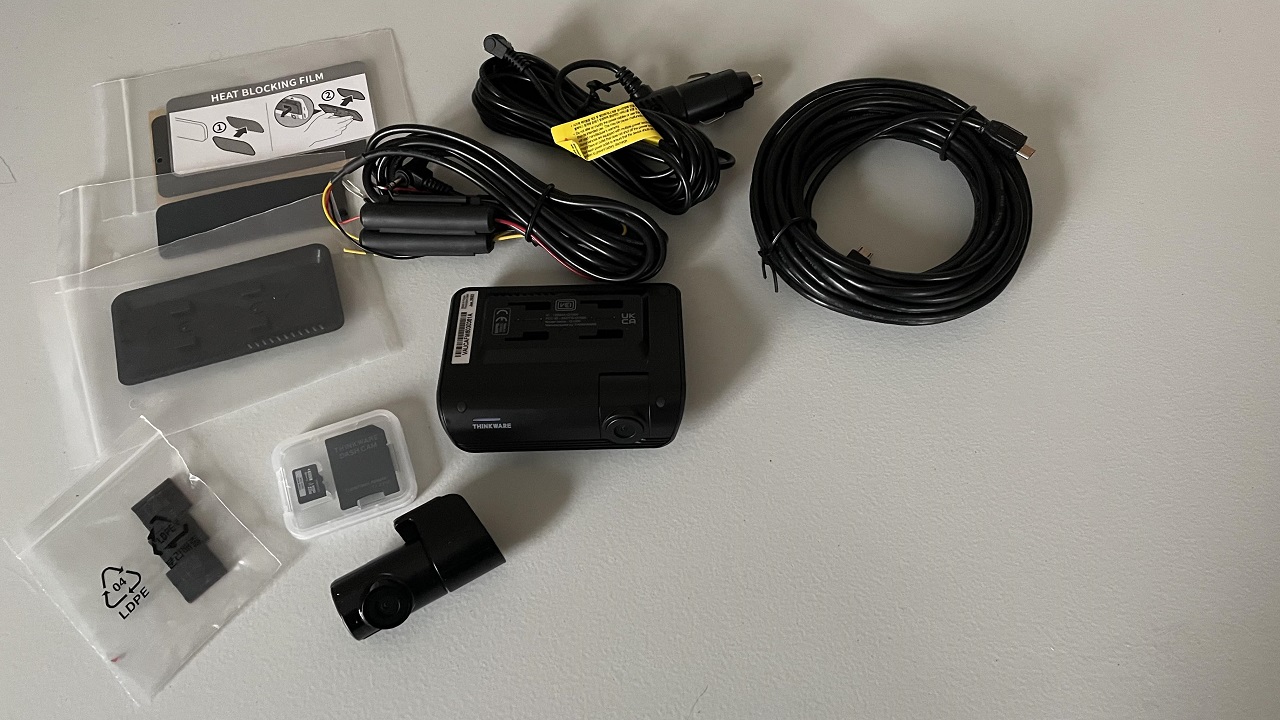
The Thinkware Q1000 dash cam might be the highest end one I’ve reviewed yet. Of all the brands I’ve reviewed, Thinkware has shown the most variety in offerings, ranging from cloud-based options to localized options, and options with and without Wi-Fi and mobile app support. Diversity in options is always good for people with different tastes and budgets.
The Thinkware Q1000 is a dual channel dash cam with flexible recording options, updated tech, and a wealth of other features that, on paper, make it look like a standout in a sea of dash cams. This is where this review begins.
Unboxing your Thinkware Q1000 dash cam
There are a lot of parts included with your new dash cam, including the front and rear cameras that default record at 30 FPS at 1440p. There’s no separate GPS peripheral this time since it’s onboard the front camera. The front camera can also record at 1080p 60 FPS. However, this will require a full re-format of your card and you’ll lose any existing recordings. You also get a front mount with an extra adhesive and heat shield film for it, a 12V car charger and hard wiring kit for choice of power, wire clips, and a 32GB MicroSD card with adapter. The card is pre-formatted for immediate use as well.
There is a port for a radar add-on, which is optional and not included in this package. The radar add-on helps wake up your camera to capture footage before and after a collision when it is in Energy Saving Mode.
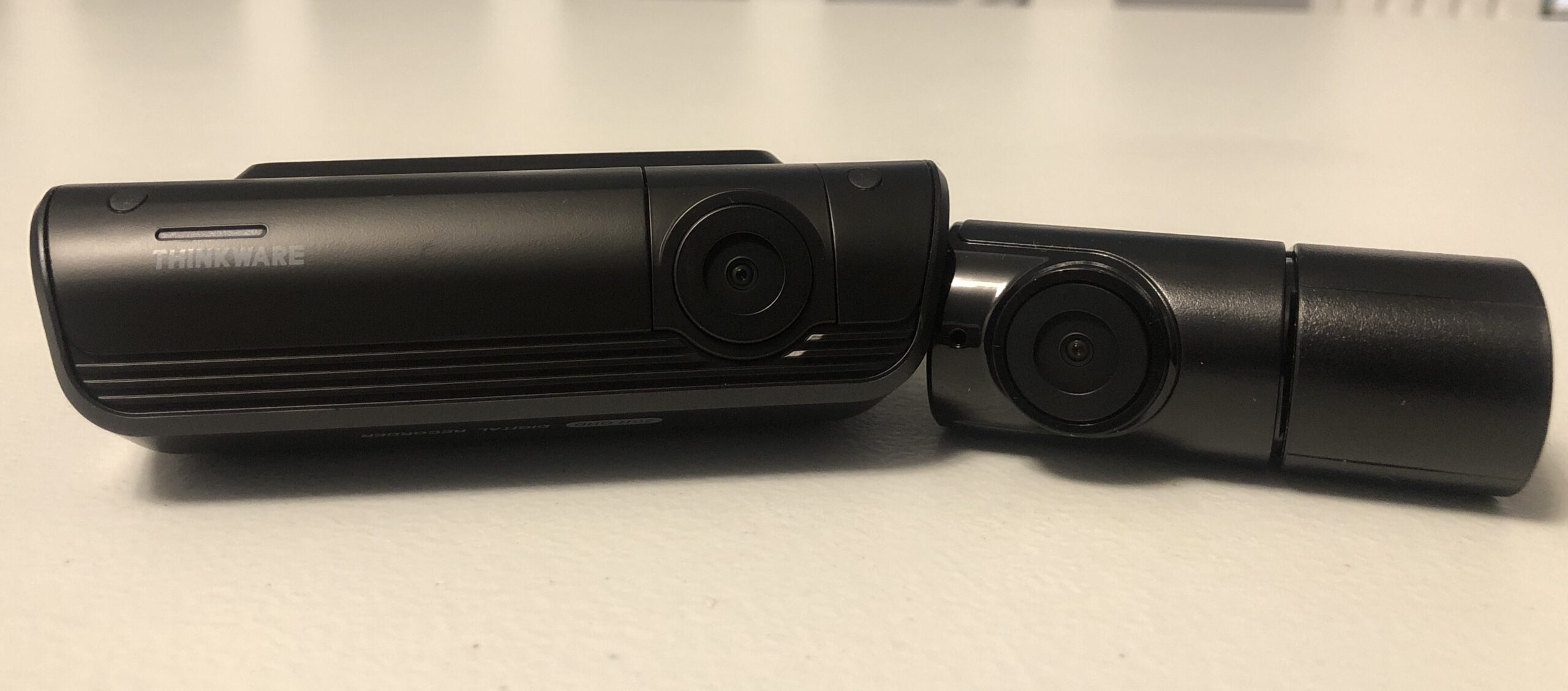 Hooking up your Thinkware Q1000
Hooking up your Thinkware Q1000
As can be expected, Thinkware provides two useful methods to connect your dash cam. The soft install sees you plug in through the 12V car charger. Depending on your vehicle, this could be a continuous power source (though I assume a fair drain on your battery this way if it is) or not. Case in point, my SUV considers this port to be continuous power, while my sedan does not. Then there is the hardwiring kit, which has you connect to continuous power sources through your vehicle’s fuse box. That continuous power source draws a small amount but gives you access to all of the hard wiring parking surveillance features. Depending on what’s available in your vehicle, you might also need to buy extra fuse adapters to make it work.
There is more than enough, and trust me when I say MORE than enough, slack from the rear camera out to the front. After hiding wiring from the back to the front, I think I was still left with about 15 feet of extra slack.
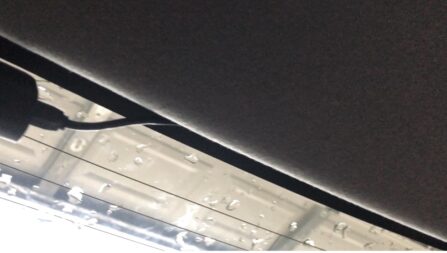
Hard wiring was a different issue. I was interested in hard wiring this dash cam to my sedan and then taking advantage of the parking surveillance features. Unfortunately, I had some trouble finding somebody locally to do this, and when we finally got to where we decided to do it ourselves, we ran into a couple of technical difficulties. Unfortunately, I won’t be able to show off hard wiring features during the initial review, but will try and get a video out in the future when we’re able to connect the hard wire kit. If hard wiring is absolutely not an option for you, or you cannot make it work within the confines of your vehicle (i.e. the hardwiring kits aren’t long enough or some other sort of technical difficulty), Thinkware does also sell standalone dash cam batteries for their systems. These again do require hard wiring (since they need a charging source) but are another possibility.
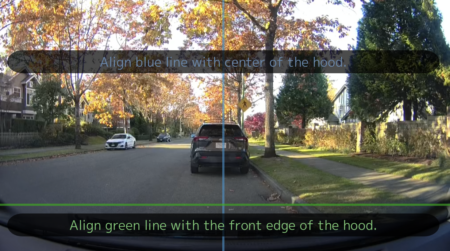
Should you go with soft wiring the dash cam, it’s a basic plug and play process. Just remember to make sure that everything is connected properly and clicked into place. You’ll receive some notifications from your dash cam if it isn’t hooked up properly. If it is, you’ll just be encouraged to have a safe drive!
Connecting to your Thinkware Q1000 dash cam
When you go to your App store, you’re going to see two Thinkware apps—ThinkwareCloud and DashCamLink. It’s DashCamLink that you want to download to connect to this camera. I’ve reviewed so many Thinkware dash cams at this point that I had both on my phone, so I decided to try and connect to the wrong app on purpose to see what happens. The ThinkwareCloud app DOES recognize your Q1000, but will tell you that it isn’t supported and rightly tells you to download the proper app.
Connecting to the camera is probably a 30ish second process each time. However, the first time you properly connect to the camera, it should pick up the Q1000 each time as long as you see the valid Wi-Fi signal and open the app. Once you’re connected to the camera though, the transfer speeds to your phone are really fast.
From here, you can view all of your footage to date as well as changing up your settings. If you prefer, you can also use the Thinkware PC Viewer program which is bundled onto the memory card, or just plug the MicroSD card into your PC and watch your recordings straight from there.
Operating and fine-tuning your Thinkware Q1000 dash cam
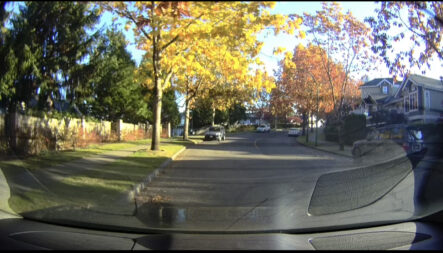
By default, both Thinkware Q1000 cameras record at a 156 degree field of vision at 30 FPS. They are also onboarded with Sony’s STARVIS image technology. As mentioned above, you can have your front camera record at 60 FPS if need be as well, though it’ll be downscaled to 1080p. While the rear camera looks like your standard Thinkware rear camera on the outside, it’s a bit more powerful on the inside. The cameras come equipped with Night Vision 3.0 as well, providing clearer footage at night than past Thinkware camera equipped with previous versions.
Fine tuning is done completely through the app, including help with mounting your camera in the right spot. You can use the app as a guide to install both cameras in the right place. There’s also a handy calibration overlay that the app provides to ensure that you have your front camera pointing out correctly. The front camera can be manually adjusted to fit within those parameters. You can then use a live guide to properly mount your rear camera as well.

There are a handful of options available in the app, including flipping the rear camera view, changing recording type, tinkering with the speed/GPS and more. They’re all fairly stock standard options you would expect from a camera. I couldn’t find any continuous loop modification options, which means that the dash cam loops recordings for you in one minute slices and will record over footage once the camera is full.
One really helpful feature, however, is that when calibrated, you get this great suite of driver assistance features. Thinkware cameras I’ve reviewed for the past few years have always had red light camera detection, however, there’s a lot more here. I also received notifications for speed traps, changes in speed limit, and full Advanced Driver Assistance features, like collision detection and 360 degree departure and collision warnings. Since there is no LCD screen on this model, you’ll have to get used to the audible notifications of ADAS here, but it’s easy enough to learn them. Using the Thinkware Connected app, you’ll also get some extra features like the ability to send emergency alerts to a deemed contact, impact notifications, and more. Again, while the features of Thinkware Connected aren’t mandatory (and require you to register the camera and an account with Thinkware), they’re just great extra features thrown in to help the case of going with one of their dash cams.
Thoughts on using the Thinkware Q1000 dash cam
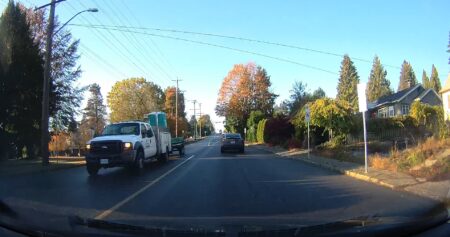
When I look at dash cams, I always think about a couple of things for the average consumer aside from the features. The ease of install, the small footprint on the windshield, and all of the additional features make this a winner for me.
In addition to the expected recording features, I really like the fact that dash cams now come with helpful supplementary features like ADAS and its collision/lane departure warnings. After you initialize the ADAS through the app, you’ll have to fine tune it a bit so that it is sensitive, but not too much. The notifications sound a bit like the seatbelt fastening noise on an airplane, so you’ll want to play around until you get just the right amount and it isn’t overdone.
Is the Thinkware Q1000 worth the price?

The Thinkware Q1000 is a higher end dash cam with a higher end price tag, but the features make it worth the price. I think anybody in the market for a dash cam should really think about whether all of these features are those you’re interested in and then commit. This is a definite step up from the X800 (both in features and all around recording) that I reviewed a couple months ago. This is the type of camera I’d recommend straight off to anybody looking for one, though the absence of the LCD screen might be a hangup for some (like my mom, for example) so I’d say weigh out everything you need, and everything that’s a nice to have and make the choice. Either way, I quite like this one and feel like we’ll be using it for a long time.
The Thinkware Q1000 dash cam (and the optional radar hookup and colour polarizing filters) is now available at Best Buy and online at bestbuy.ca.






It would make me feel safer as I drive
It would help me in case of a crash for evidence
Super Night Vision 3.0 boosts exposure levels in low-light conditions and enhances video brightness so I don’t miss important details while driving at night.
A dash cam would give me peace of mind and make me feel safer knowing it was collecting data.
Having this dash cam would enable me to keep my car safe from other drivers and have a record of good driving habits as well
Receiving notifications for speed traps, and changes in speed limit
Making me feel safer driving knowing this dash cam has Advanced Driver Assistance features, like collision detection and 360 degree departure and collision warnings.
The ease of installation and the Night Vision 3.0 would be awesome.
The Night Vision feature would be extremely handy. Thanks for the opportunity.
I think the night vision feature is cool!
Night vision 3.0 would really help for night-time driving
It would be benefit to have to record traffic incidents.
This dash cam would really benefit me as I do A LOT of driving within the city and on the highway – the collision/lane departure would be wonderful to help prevent accidents; as well as the peace of mind that if something were to happen, I would have a recording of it!
I think that the extra features like notifications for speed traps, changes in speed limit, and full Advanced Driver Assistance features, like collision detection and 360 degree departure and collision warnings would benefit me greatly.
Night vision 3.0 would really help for night-time driving
This would benefit my life because it would take the anxiety and “misremembering” out of the equation if the car is in a collision.
Other than recording your driving it also being a driving assistant would greatly benefit me if it was installed in my car.
Receiving notifications for speed traps, changes in speed limit, and full Advanced Driver Assistance features.
Night Vision 3.0, providing clearer footage at night.
For my daughter. To film if something ever happened. For protection
I feel that having a dash cam like this with it’s safety and driver assist features would make me feel much safer on the road and having proof in case of an accident would make me much more confident when going out.
This dash cam would benefit your life if I installed one in my car as it would simply make me feel safer ! Safety is so important that I believe it would be worth it.
The Night Vision 3.0 would be very handy if driving at night.
The ADAS feature and its collision/lane departure warnings will improve my road safety
I like that the The Thinkware Q1000 is equipped with Night Vision 3.0!
This dash cam would benefit my life if I installed one in my car because I can record my car’s surroundings clearly day or night in case of an accident.
The ADAS and its collision/lane departure warnings gives me more protection while driving.
The Thinkware Q1000 would benefit me if I had one installed in my vehicle because it would provide peace of mind in case of an accident and video evidence of anything that may have happened.
Because our winter days are so short in Canada, I would really benefit from the Night Vision 3.0 as I’m constantly driving on icy roads in the dark.
The Thinkware Q1000 dash cam would allow me to receive notifications for speed traps, changes in speed limit, and full Advanced Driver Assistance features. And provide information in case of accidents, break-in, or other incidents.
A dashcam would give you the peace of mind of knowing that you have recorded video footage in case you are ever involved in an accident .
The Thinkware Q1000 dash cam would provide video of any impacts in a parking lot.
With this dash cam I would benefit from the driver assistance features such as speed traps, changes in speed limit, collision detection and and collision warnings.
This system would be very valuable as it provide proof who was at fault in a car accident to the police and insurance company. I would also receive notification of
speed traps and advance driver assistance features to help me drive safely.
The night vision feature would benefit me as I work shifts.
I will receive notifications for speed traps, changes in speed limit, and full Advanced Driver Assistance features,
The night vision feature would benefit me as I work shifts.
Since I often drive at night I would like the Night Vision to have clearer footage of wildlife at night.
I think if I was to have this dash cam that being on the road would be a whole lot safer for me and my family.
I know bad drivers cause accidents, and don’t even know the aftermath they leave behind. I would love to be able to help.
A dash cam could do that. It would likely improve my own driving also.
This dash cam would benefit my life if I installed one in my car because I can record my car’s surroundings clearly day or night in case of an accident.
I like that the The Thinkware Q1000 is equipped with Night Vision 3.0!
The Thinkware Q1000 is equipped with Night Vision 3.0 that would be an excellent feature
The Thinkware Q1000 dash cam would benefit me by giving impact notification if this occurs in a parking lot.
The cameras come equipped with Night Vision 3.0 as well
The cameras come equipped with Night Vision 3.0 as well
I will receive notifications for speed traps, changes in speed limit, and full Advanced Driver Assistance features,
The ADAS feature and its collision/lane departure warnings will improve my road safety
There are too many ice holes on the roads today. Impatient drivers make for a suspenseful commute, and will record to actions and license plates of offensive drivers.
The ease of install, the small footprint on the windshield
Comments are closed.